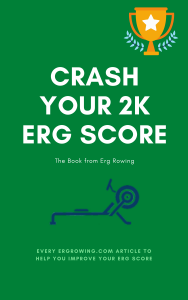I’ve had a lot of back problems lately. I’ve been seeing a couple physiotherapists and back specialists to try and solve the problem. They all say it’s the same thing.
Wear and tear.
I never knew there was such an ordinary language medical term. Whatever it’s name, the worst thing is that it could have been prevented.
#1 Core Stability
Sitting writing this article I’m aware of 2 things – what I’m writing to you and how I am sitting. 6 months ago I would have been only aware of the way I was writing.
Core stability has become an obsessive part of my life. I am trying to protect my lower back.
When I took a break from rowing a few years ago I tried other sports. It was great for a while but never had the same appeal as rowing or erging. So I went back rowing and erg rowing.
But the time bomb had been set.
I had gotten away with it for years. (Bad rowing back posture)
And now all the muscles had begun to weaken (during my time away)
Alas one morning back in August I knew something big was going on.
So now I spend a lot of time doing Pilates and core work. All the other times I spend erging and altering my erg technique posture so that my spine is in a neutral position. This is not easy after almost 20 years doing more or less the same rowing movement day in day out.
I will take time and patience to change. And a lot of core work.
#2 Technique
Do a YouTube search and watch how, for example the British rowing team now row. It looks very upright compared to say rowing at the 1984 Olympics (which is also on YouTube). It’s not just style that has changed. It is sports medicine and biomechanics that have changed. They way they row is functional, effective and above all, safe (in the long run).
But they haven’t been the pioneers. Have a look at how Rob Waddell rowed in the single scull 11 years ago in Sydney. His rowing is an excellent example of a controlled neutral spine supported by a rock solid core. If you get the chance look at how connected and loose his upper body is. His legs are doing most of the work. And above all his core is the rock solid lynchpin.
Oh if I was 14 years old again.
I’d learn where my neutral spine position was and I would row in that position for the next 60 years plus. And more than likely I would not be writing this article.
But if it’s one thing that rowing has thought me…
It’s never too late.
And as for the non-rowing things I would do? Well, that’s for another day…
[mc4wp_form]


February 16, 2011 at 1:09 pm
Thanks Brandy, glad someone is now blogging about this stuff.
People bang on about neutral spine all the time and i am just not sure how possible it is… even rob waddell is showing some lumbar flexion – although it is as close as you will get in rowing to neutral spine. I am a chiropractor and teach people about neutral spine all day but I am still unsure if it is possible anatomically in the seated rowing position. You see many great athletes with hugely over developed lumbar erector spinae muscles (e.g. James Clarke) which compensates and protects an overly flexed lumbar spine.
In rowing the lumbar spine will compensate for lack of flexibility in the lower limb, especially ankle dorsiflexion and hamstring flexibility – these two areas are the first to work on where excessive lumbar flexion is a problem. Only then would i suggest training the core. Core stability training in the standing position is very hard to then apply in the rowing position, especially in the presence of tight hamstrings and lack of ankle dorsiflexion.
This discussion has fascinated me for a while, so if anyone has anything to add then please do…
Paddy